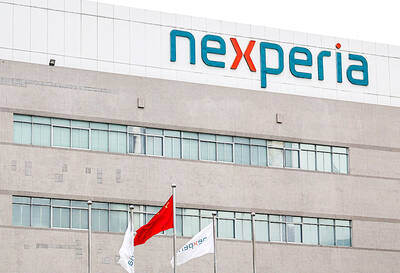The Japanese government yesterday approved ¥774 billion (US$6.8 billion) in funding for domestic semiconductor investment, backing up Japanese Prime Minister Fumio Kishida’s commitment to make the nation a major global provider of essential computer chips.
The package, part of an extra budget for this fiscal year that the Cabinet approved yesterday, consists of three parts: ¥617 billion to fund domestic investment into cutting-edge chip manufacturing production capacity, ¥47 billion for legacy production such as analog chips and power management parts, and ¥110 billion for the research and development of next-generation silicon.
Tokyo is to spend part of the ¥617 billion package on a planned Taiwan Semiconductor Manufacturing Co-Sony Group Corp plant in Kumamoto Prefecture.
While the Japanese Ministry of Economy, Trade and Industry has not elaborated on the exact amount that is to be used for the project, it has said it would pay “up to half” of the total investment needed for a project in this category.
For legacy chip production, aid for up to one-third of the total capital expenditure would be provided, the ministry said.
The approved budget is just the beginning of increased investment in the sector, with Japan’s ruling party and government making it a priority to support companies beefing up semiconductor production.

JITTERS: Nexperia has a 20 percent market share for chips powering simpler features such as window controls, and changing supply chains could take years European carmakers are looking into ways to scratch components made with parts from China, spooked by deepening geopolitical spats playing out through chipmaker Nexperia BV and Beijing’s export controls on rare earths. To protect operations from trade ructions, several automakers are pushing major suppliers to find permanent alternatives to Chinese semiconductors, people familiar with the matter said. The industry is considering broader changes to its supply chain to adapt to shifting geopolitics, Europe’s main suppliers lobby CLEPA head Matthias Zink said. “We had some indications already — questions like: ‘How can you supply me without this dependency on China?’” Zink, who also

The number of Taiwanese working in the US rose to a record high of 137,000 last year, driven largely by Taiwan Semiconductor Manufacturing Co’s (TSMC, 台積電) rapid overseas expansion, according to government data released yesterday. A total of 666,000 Taiwanese nationals were employed abroad last year, an increase of 45,000 from 2023 and the highest level since the COVID-19 pandemic, data from the Directorate-General of Budget, Accounting and Statistics (DGBAS) showed. Overseas employment had steadily increased between 2009 and 2019, peaking at 739,000, before plunging to 319,000 in 2021 amid US-China trade tensions, global supply chain shifts, reshoring by Taiwanese companies and

Taiwan Semiconductor Manufacturing Co (TSMC, 台積電) received about NT$147 billion (US$4.71 billion) in subsidies from the US, Japanese, German and Chinese governments over the past two years for its global expansion. Financial data compiled by the world’s largest contract chipmaker showed the company secured NT$4.77 billion in subsidies from the governments in the third quarter, bringing the total for the first three quarters of the year to about NT$71.9 billion. Along with the NT$75.16 billion in financial aid TSMC received last year, the chipmaker obtained NT$147 billion in subsidies in almost two years, the data showed. The subsidies received by its subsidiaries —

At least US$50 million for the freedom of an Emirati sheikh: That is the king’s ransom paid two weeks ago to militants linked to al-Qaeda who are pushing to topple the Malian government and impose Islamic law. Alongside a crippling fuel blockade, the Group for the Support of Islam and Muslims (JNIM) has made kidnapping wealthy foreigners for a ransom a pillar of its strategy of “economic jihad.” Its goal: Oust the junta, which has struggled to contain Mali’s decade-long insurgency since taking power following back-to-back coups in 2020 and 2021, by scaring away investors and paralyzing the west African country’s economy.